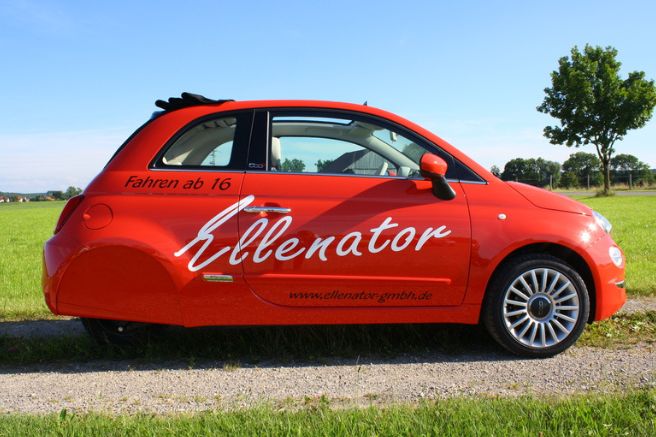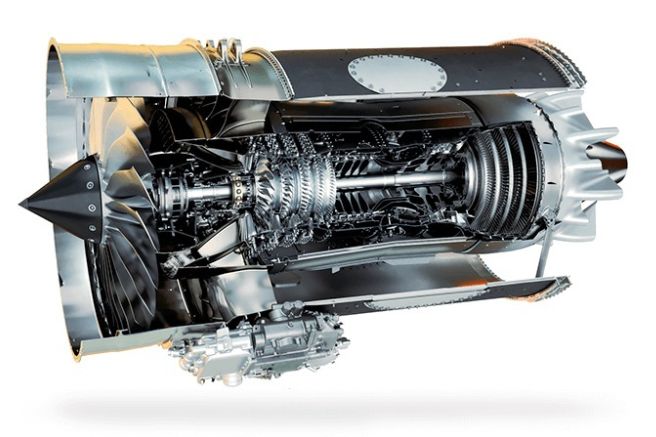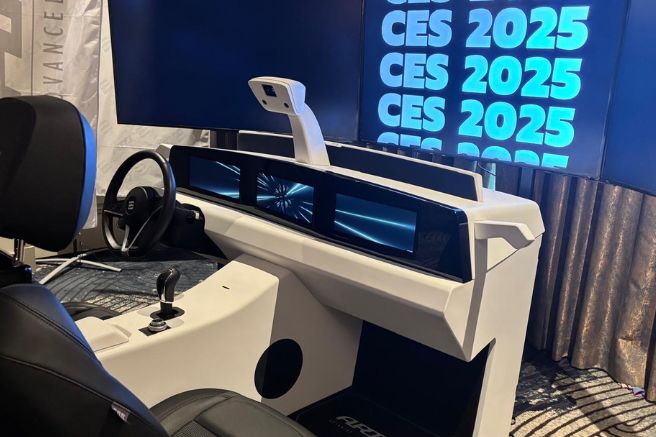
Inspired by two prototype vehicles that helped Renault achieve multiple speed and endurance records in the last century, the Renault Filante Record 2025 is a fully electric prototype with aeronautical-inspired lines, designed to set new records in energy efficiency and range
This is not the typical concept car made to be paraded at trade shows to hint at future design trends. Instead, it’s an ultra-efficient demonstration vehicle developed specifically to break new ground in terms of energy consumption and driving autonomy. These are the core principles behind Renault’s “Filante Record 2025”, a full-electric prototype aiming to achieve the highest standards in energy efficiency. Its name and design take inspiration from two of Renault’s historic record-setting prototypes.
The name “Filante” explicitly refers to the “Étoile Filante”, a single-seater unveiled in 1956 that drew direct inspiration from aviation and was built by Renault engineers to break land speed records. “Record” harkens back to the “40 CV des Records”, sleek, narrow single-seaters derived from the production 40 CV model that set multiple endurance and speed records starting in 1925.
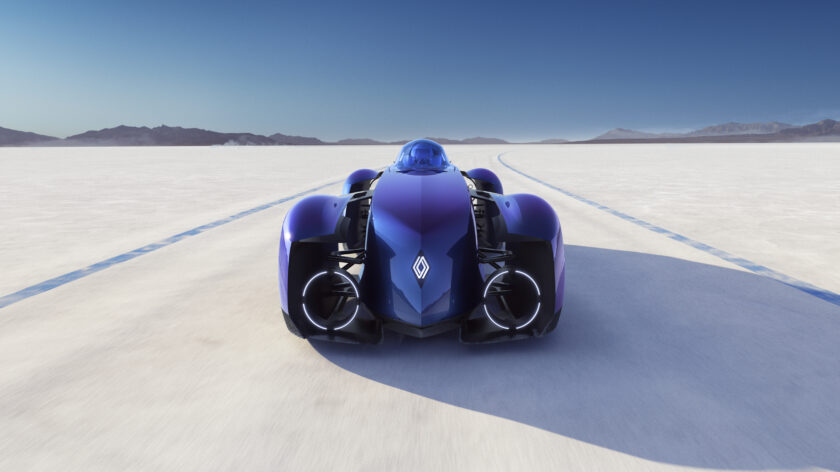
The “Filante Record 2025” shares the same ambition to carve its name into automotive history but does so using propulsion systems derived from modern production models. While its specific electric drive unit hasn’t been disclosed, the prototype uses the 87 kWh battery pack found in the Scenic E-Tech Electric.
Its futuristic shape is heavily influenced by aviation, not just to convey elegance and lightness but also to maximize aerodynamic performance. The vehicle was developed through a collaboration between Renault’s engineering and design teams and Ligier Automotive, with a strong focus on airflow optimization. The vehicle’s extended length allows for better aerodynamic load management by reducing turbulence, and the wheels have been fitted with fairings to further cut drag.
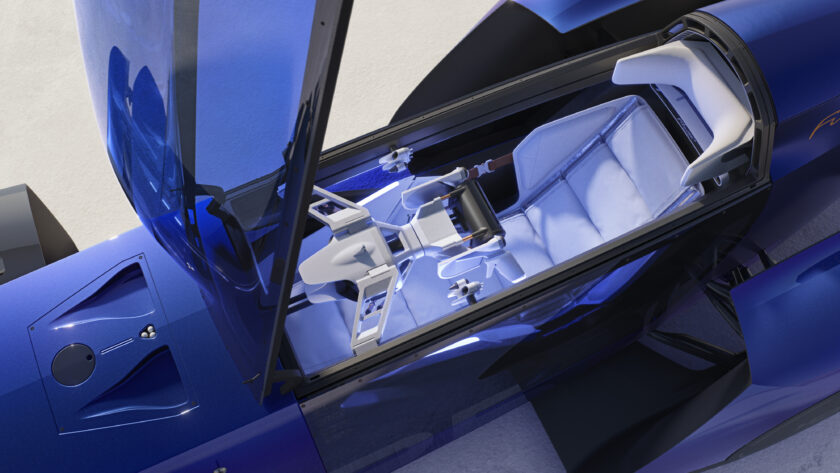
As a result, the Filante Record 2025 measures 5.12 meters in length, 1.71 meters in width, and 1.19 meters in height, with an overall weight kept under 1,000 kg. This was achieved through the use of carbon fiber, and a blend of aluminum, carbon, and steel alloys during construction. Notably, the team also utilized Scalmalloy, a high-strength aluminum alloy specifically developed for 3D printing, enabling lightweight yet robust structural components.

This approach ties in with the topological optimization strategy employed by Renault and Ligier Automotive—retaining materials only in areas subjected to specific mechanical stress. Advanced simulations were used to identify where structural integrity was critical and where material could be removed to save weight without compromising strength.
Further weight reduction came from adopting “Steer-by-Wire” and “Brake-by-Wire” systems, replacing traditional mechanical linkages with fully electronic controls.
- With Steer-by-Wire, the steering column is eliminated. Instead, steering input is translated electronically between the wheel and the rack motors.
- The Brake-by-Wire system works similarly: when the driver presses the brake pedal, an electronic signal is sent to distribute braking force optimally between the wheels.
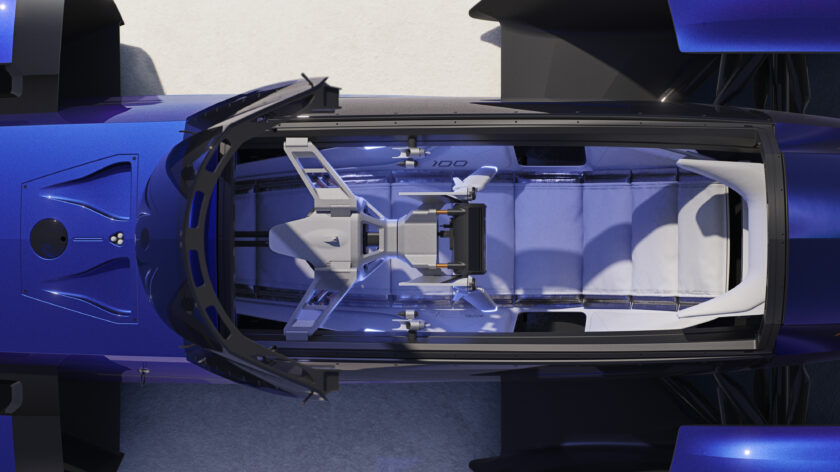
The aeronautically inspired exterior design is mirrored inside the cabin, where every detail has been engineered for maximum driving comfort. The interior is minimalist, ergonomic, and centered around an innovative steering wheel that integrates a flexible panoramic screen wrapped around a central cylinder. This setup offers clear and immediate access to vital driving data such as speed, remaining range, and driving parameters.
Honoring Legendary Ancestors
As mentioned, the Filante Record 2025 pays tribute to two of Renault’s most iconic record-breakers.
- The Étoile Filante was a single-seater with aerodynamic elements inspired by aviation, powered by a kerosene-fueled turbine capable of delivering 270 horsepower at 28,000 RPM. Power was transmitted to the ground through a single-speed Transfluid transmission housed within a tubular frame wrapped in polyester. This car set four speed records on September 5, 1956, on Utah’s Bonneville Salt Flats:
- 306.9 km/h over 1 kilometer
- 308.85 km/h over 5 kilometers
- 307.7 km/h over 1 mile
- 280.8 km/h over 5 miles
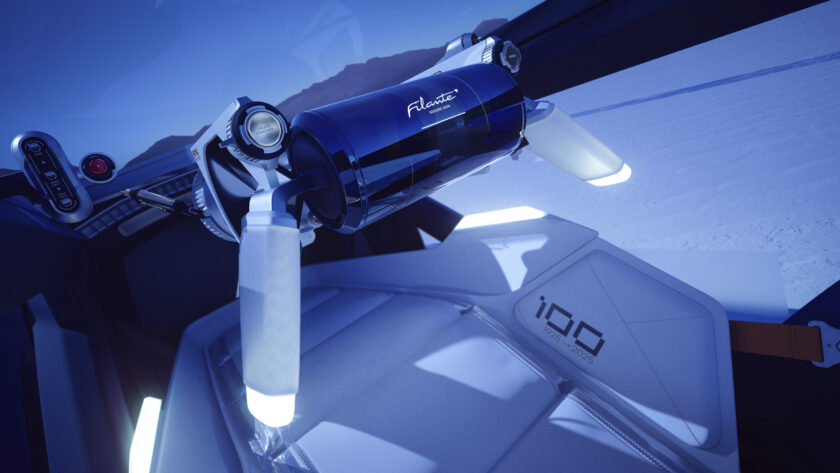
- The 40 CV des Records, in its open-body version, broke three endurance records on May 11, 1925, at the Montlhéry circuit in France, setting the highest average speeds over:
- 3 hours
- 500 kilometers
- 500 miles
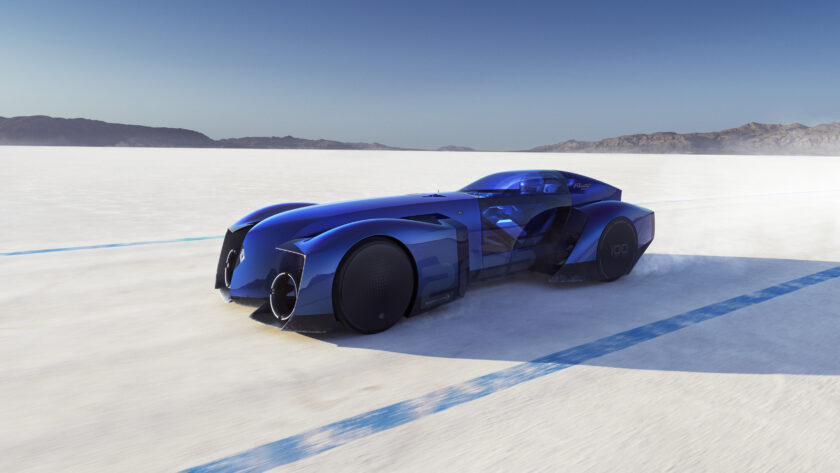
A more prestigious achievement came a year later on July 9, 1926, when a closed-body version set a record during the 24 Hours of Montlhéry, covering 4,167.578 kilometers at an average speed of 173.649 km/h. This was made possible by a 9-liter inline-six engine tuned to deliver 150 horsepower.
Title: Renault Filante Record 2025, full electric prototype that aims for maximum energy efficiency
Translation with ChatGPT

